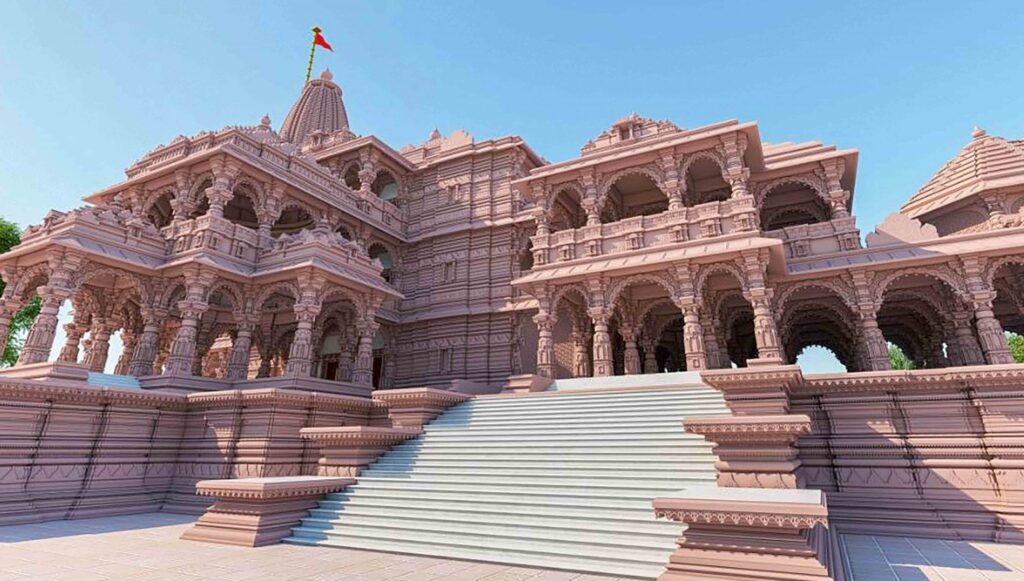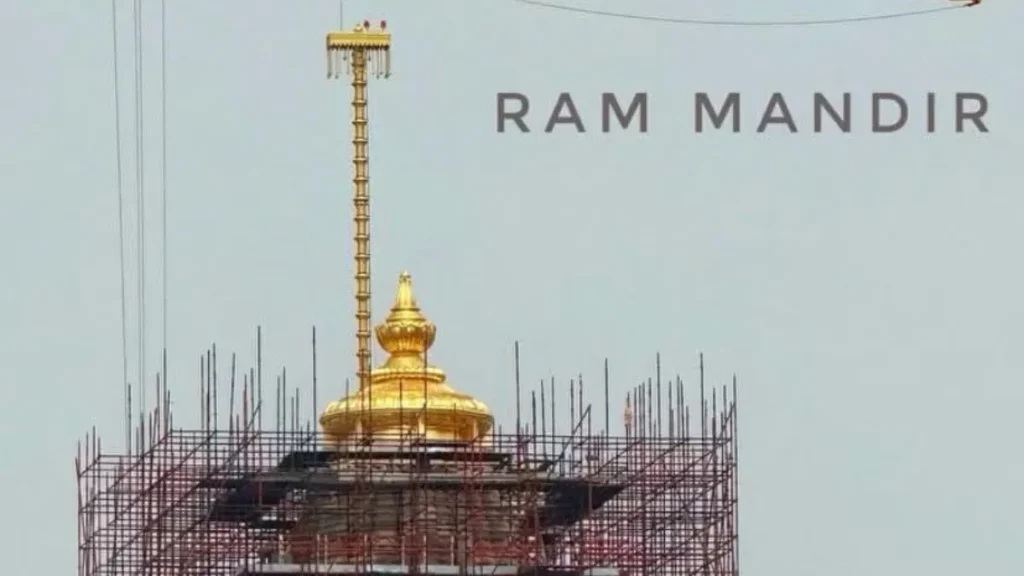Ayodhya Shines as the Ram Temple Receives its Golden Crown
Ayodhya, the spiritual heart of India, has reached a historic milestone as the Ram Janmabhoomi Mandir sees the installation of a magnificent gold-plated Shikhara atop its sanctum. This milestone arrives just before the second Pran Pratishtha ceremony, scheduled between June 3–5, 2025, making this not only a sacred moment but a national and global cultural event. The radiant golden spire, gleaming under the sun, stands as a symbol of Hindu devotion, cultural pride, and architectural brilliance, drawing awe from pilgrims and tourists alike.
In this article, we explore the deeper cultural and architectural significance of the Ram Mandir’s golden Shikhara, the rituals of the upcoming Pran Pratishtha ceremony, and what it means for Ayodhya’s position as a global Hindu pilgrimage destination. We also examine the temple’s ongoing transformation and future plans as it nears full completion in 2025.
The Origins of Ayodhya Ram Temple and its Sacred Shikhara
The construction of the Ram Janmabhoomi Mandir is the result of centuries of faith, struggle, and devotion. Located at the birthplace of Lord Ram, the temple symbolizes the spiritual and cultural heartbeat of Sanatan Dharma. After the Supreme Court’s 2019 verdict, the temple construction was formally launched in 2020 under the Shri Ram Janmbhoomi Teerth Kshetra Trust.
In Hindu temple architecture, the Shikhara or spire represents the cosmic axis – a sacred connection between the temple and the divine. It is often the tallest and most visually prominent feature, designed to be seen from miles away. The decision to gold-plate the Shikhara not only enhances visual grandeur but also reflects ancient Indian traditions where gold symbolizes divinity, purity, and timeless prosperity.
📍 Ayodhya — A magnificent gold-plated 'Shikhara' has been installed atop the Ram Temple ahead of the June 3rd Pran Pratishtha ceremony of the Ram Darbar 🥰
— Megh Updates 🚨™ (@MeghUpdates) June 2, 2025
— Jai Shree Ram 🚩 pic.twitter.com/CEIrg29VAM
Gold-Plated Shikhara and Pran Pratishtha 2025 – A Spiritual Renaissance
Gold-Plated Shikhara Installation
The temple’s main Shikhara has now been covered with pure gold sheets under expert supervision. The shine of this golden crown under the morning and evening sun creates a sacred aura visible for kilometers, akin to the Golden Temple of Amritsar, making it one of the most breathtaking religious structures in the world. What’s more, all Shikharas across the complex will be gold-plated, ensuring a unified golden glow that enhances both spiritual magnetism and visual impact.
Second Pran Pratishtha Ceremony (June 3–5, 2025)

This upcoming three-day Pran Pratishtha marks a crucial second phase of consecration, focusing on the Ram Darbar – the divine court of Ram, Sita, Lakshman, and Hanuman on the temple’s first floor. Rituals will begin daily at 6:30 am, culminating in the grand ceremony on June 5 at 11:25 am, aligning with the sacred festival of Ganga Dussehra. Additionally, eight temples on the temple’s periphery, dedicated to deities like Shiva, Ganesha, Annapurna, Surya, and others, will also be consecrated.
The Ram Mandir Trust has ensured virtual darshan (online viewing) options for global devotees, integrating tradition with technology and expanding the temple’s global reach.
Ayodhya’s Rise as a Global Pilgrimage and Heritage Hub
As of May 2025, the Ram Temple’s main sanctum and first floor are complete, including the newly crafted Ram Darbar. This has already begun drawing a surge of pilgrims and international interest. Cultural tours, media coverage, and digital engagement have surged, positioning Ayodhya as the next global epicenter of Hindu faith, much like Kashi Vishwanath, Tirupati, or Badrinath.
The comparison of the Ram Mandir’s golden spires to globally revered monuments like the Golden Temple in Amritsar reflects not only the visual opulence but the deep emotional resonance this temple holds across generations. The temple is no longer just a site—it’s becoming an anchor for national pride, religious tourism, and India’s soft power diplomacy.
Cultural Unity, Spiritual Diplomacy & Global Faith Tourism
The installation of the golden Shikhara is more than an architectural upgrade—it is a resounding cultural statement. It represents the revival of indigenous architecture, reclaiming of spiritual heritage, and India’s emerging confidence in showcasing its ancient civilizational grandeur on the global stage. The temple’s rise is set to drive faith tourism, boost local economies, and rebrand Ayodhya as a spiritual capital in the Hindu diaspora consciousness.
With final construction expected to complete by September–October 2025, this transformation is being seen as a modern-day ‘Rama Rajya’ revival, where tradition, governance, culture, and devotion come together. The global Hindu community, spanning continents, is emotionally invested—and the golden Shikhara stands as a beacon of unity, identity, and timeless faith.
The gold-plated Shikhara of the Ram Mandir is not just a structural achievement; it’s a spiritual landmark that encapsulates centuries of devotion, national resolve, and divine vision. As Ayodhya prepares for the second Pran Pratishtha, it steps further into its destined role as a center of global Hindu faith and pilgrimage. The shimmering Shikhara, visible from afar, is a call to every devotee—reminding the world of Ram Rajya’s eternal ideals, and the living heartbeat of Bharatiya civilization. As the temple nears completion, one truth becomes clear: this is more than construction—it’s consecration, identity, and timeless legacy.





















